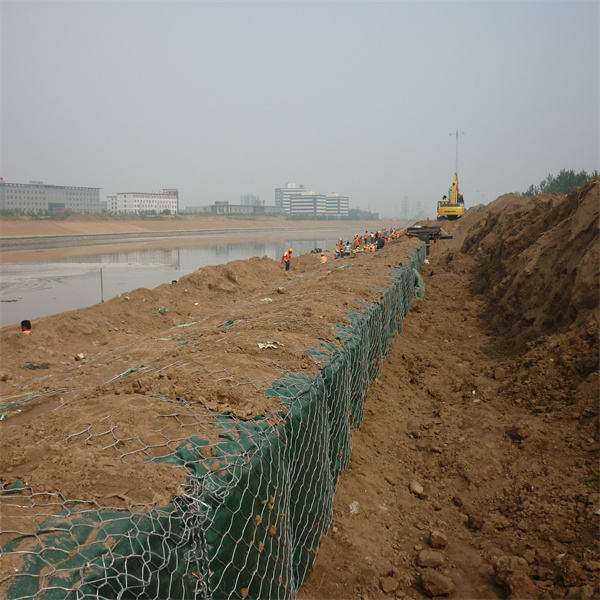តុលា . 13, 2024 13:29 Back to list
Exploring Various Gabion Shapes and Designs in China for Modern Landscaping
Exploring the Versatility of Gabion Shapes in China
Gabions, wire mesh cages filled with rocks or other materials, have become increasingly popular in various construction and landscaping applications. The unique shapes and configurations of gabions have made them a preferred choice for engineers and designers looking to create both functional and aesthetically pleasing structures. In China, the use of gabions in different shapes has gained significant traction, owing to the country's rapid urbanization and the need for effective erosion control, retaining walls, and decorative elements in landscapes.
The Evolution of Gabion Shapes
Historically, gabions were primarily used in military fortifications, but over time, their application has evolved. In modern contexts, the shapes of gabions have diversified significantly. Traditional rectangular shapes are still widely used, but innovative designs such as cylindrical, hexagonal, and even custom shapes have been developed to meet specific requirements. These variations not only serve practical purposes but also contribute to the visual appeal of structures.
Functional Benefits of Different Gabion Shapes
1. Rectangular Gabions The most common type, rectangular gabions, are often used in retaining walls and foundations. Their straightforward design allows for easy stacking and stability, making them ideal for structural applications.
2. Cylindrical Gabions These round variants are perfect for curved landscapes or bridges. Their smooth contour offers aesthetic beauty while ensuring stability and strength in water management projects, such as river embankments and drainage systems.
3. Hexagonal Gabions Hexagonal-shaped gabions provide exceptional interlocking ability, which enhances structural integrity when used in larger constructions. They are commonly seen in erosion control projects, where steep slopes need to be stabilized.
4. Custom-Shaped Gabions In recent years, the use of customized gabion shapes has surged. Designers and architects are exploring unique form factors to complement natural terrain and existing structures. Whether it's creating artistic installations in parks or bespoke landscaping features, these gabions afford unparalleled creativity and flexibility.
china gabion shapes

Aesthetic Advantages
Beyond functionality, the attractive designs of gabion shapes add to their appeal. They are often used in modern architecture to enhance the aesthetic value of buildings and public spaces. For example, gabions can be crafted into artistic sculptures or used as decorative walls, providing a rustic yet contemporary look. In urban environments, incorporating these unique shapes can break the monotony of traditional concrete structures, fostering a connection between nature and urban living.
Environmental Considerations
In addition to their architectural versatility, gabions are also appreciated for their environmental benefits. The use of natural rock in gabion structures allows for better water drainage and serves as a habitat for local wildlife. In China, where environmental sustainability is becoming more crucial, gabion structures are an effective way to manage stormwater runoff and mitigate erosion, promoting healthier ecosystems.
Future Prospects
As China continues to modernize its infrastructure, the demand for innovative construction solutions will likely grow. Gabions in various shapes will undoubtedly play a vital role in this development. Their adaptability to numerous applications—from civil engineering projects to scenic landscaping—will ensure their prevalence in future projects.
Moreover, with the rise of eco-design practices, the integration of green materials and methods into gabion construction will be an exciting frontier. Companies will likely explore using recycled materials to fill gabions or to manufacture the mesh, further enhancing their sustainability.
Conclusion
Gabions, particularly in their diverse shapes and forms, present a versatile solution for various construction and landscaping needs in China. From traditional uses in erosion control to modern artistic applications, they blend functionality with aesthetics, addressing environmental concerns while adding beauty to urban spaces. As the industry evolves, the innovative use of gabion shapes will redefine landscapes, making them essential components of contemporary infrastructure and design.
-
HESCO Gabion Baskets for Coastal Erosion Prevention
NewsAug.22,2025
-
Longevity and Durability of River Rock Gabion Walls
NewsAug.22,2025
-
How to Integrate Gabion 3D Walls in Urban Planning
NewsAug.22,2025
-
Reno Mattress Gabion Applications in Civil Engineering
NewsAug.22,2025
-
How to Install Wire Mesh for Gabion Baskets Properly
NewsAug.22,2025
-
Best Materials for Filling a Chain Link Gabion
NewsAug.22,2025
-
Wire Mesh Thickness Impact on Gabion Wall Load Bearing
NewsAug.12,2025






